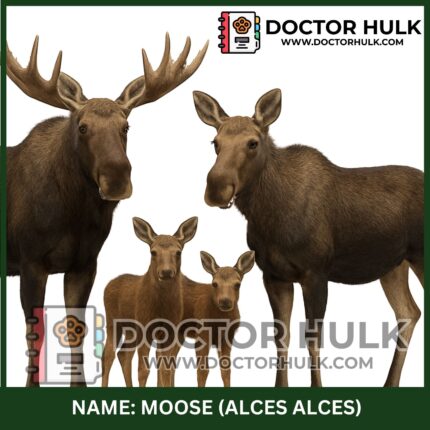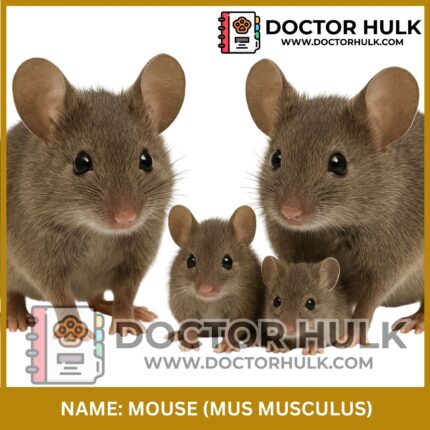The mongoose is a small but brave animal known for its speed, sharp teeth, and bold nature. It’s famous for its ability to fight and kill snakes, even deadly ones like cobras. Despite its size, this little warrior is strong and smart.
Scientific Classification
-
Kingdom: Animalia
-
Phylum: Chordata
-
Class: Mammalia
-
Order: Carnivora
-
Family: Herpestidae
-
Common Genus: Herpestes
Common Names
-
Mongoose
-
Indian Grey Mongoose
-
Slender Mongoose
-
Egyptian Mongoose
-
Dwarf Mongoose
Geographic Distribution
Mongooses are found in:
-
Africa
-
Asia (especially India and Sri Lanka)
-
Southern Europe
-
Some have been introduced to the Caribbean islands
They live in grasslands, forests, farmlands, and even near human homes.

Image showing a mongoose standing alert in tall grass (Source: Howie’s Wildlife Images)
Physical Characteristics
-
Size: 20–60 cm long, depending on species
-
Tail: Long and bushy, often half their body length
-
Color: Usually brown, grey, or reddish
-
Body: Slender with short legs and sharp claws
-
Eyes: Sharp and alert with good vision
Common species of Mongoose
1. Indian Grey Mongoose

Image showing an indian mongoose in a village path (Source: Getty Images)
-
Common in India and known for fighting cobras
-
Fast, fearless, and good at catching snakes and rats
Key Facts:
-
Grows up to 45 cm
-
Active during the day
2. Dwarf Mongoose
 Image showing a small group of dwarf mongooses (Source: Shutterstock)
Image showing a small group of dwarf mongooses (Source: Shutterstock)
-
Africa’s smallest mongoose species
-
Lives in family groups
Key Facts:
-
Only about 18–30 cm long
-
Very social and friendly within the group
3. Egyptian Mongoose
 Image showing an egyptian mongoose in dry bushland (Source: Tanzania Safari Tours)
Image showing an egyptian mongoose in dry bushland (Source: Tanzania Safari Tours)
-
Found in North Africa and parts of Spain
-
Bigger and more solitary
Key Facts:
-
Grows up to 60 cm
-
Eats a wide range of small animals
What do Mongooses eat?
Mongooses are carnivores, meaning they eat mostly meat. Their diet includes:
-
Snakes (including venomous ones)
-
Rats and mice
-
Insects and spiders
-
Birds and eggs
-
Frogs and lizards
They use their sharp teeth and speed to catch prey.
Fun facts about Mongooses
-
Mongooses have special resistance to some snake venoms.
-
They are very fast and agile, which helps them avoid bites.
-
Some mongooses live in groups with clear leaders.
-
They use clicking or chirping sounds to talk to each other.
-
In old stories, they were seen as lucky animals for killing snakes.
Importance to Humans
Positive Roles:
-
Control rats, mice, and snakes
-
Reduce crop damage on farms
-
Kept as pets in some rural areas (though not recommended without proper care)
Challenges:
-
In some countries, mongooses became pests after being introduced
-
Can sometimes raid poultry farms and eat eggs or chicks
Health & common issues
Mongooses are tough animals, but they can still get sick or injured.
Common health problems include the following:
-
Snake bites (especially from bigger snakes)
-
Injuries from fights
-
Skin diseases or ticks
-
Malnutrition in captivity
Veterinary tips (for zoos or rescue centers):
-
Provide enough space and natural foods
-
Treat wounds quickly
-
Keep them stimulated, they are very active
-
Don’t keep them as pets unless professionally managed
Conservation Status
Most mongoose species are not endangered, but some face threats from:
-
Habitat loss
-
Road accidents
-
Illegal hunting and trade
Protection laws exist in some areas to stop mongoose poaching or misuse.
Mongoose vs Meerkat: What’s the Difference?
| Feature | Mongoose | Meerkat |
|---|---|---|
| Habitat | Africa, Asia, Europe | Southern Africa |
| Behavior | Some live alone, some in groups | Very social, live in groups |
| Diet | Small animals, snakes | Insects, small animals |
| Popularity | Known for snake fighting | Known for standing upright |
 Image showing a mongoose facing a cobra in the grass (Source:A-Z Animals)
Image showing a mongoose facing a cobra in the grass (Source:A-Z Animals)
If you have questions about wild animals or pest control, you can reach out to us at Doctor Hulk Veterinary Hospital, or call 08143397614.


















Reviews
There are no reviews yet.